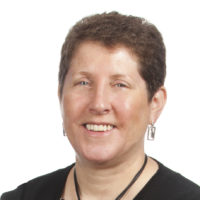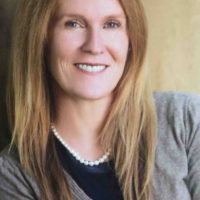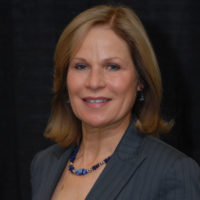 <img width=”300″ height=”200″ src=”http://www.eschoolnews.com/files/2017/01/2017trends-300×200.jpg” class=”attachment-small-landscape size-small-landscape wp-post-image” alt=”edtech trends 2017″ srcset=”http://www.eschoolnews.com/files/2017/01/2017trends-300×200.jpg 300w, http://www.eschoolnews.com/files/2017/01/2017trends-600×400.jpg 600w, http://www.eschoolnews.com/files/2017/01/2017trends-800×533.jpg 800w” sizes=”(max-width: 300px) 100vw, 300px” />
<img width=”300″ height=”200″ src=”http://www.eschoolnews.com/files/2017/01/2017trends-300×200.jpg” class=”attachment-small-landscape size-small-landscape wp-post-image” alt=”edtech trends 2017″ srcset=”http://www.eschoolnews.com/files/2017/01/2017trends-300×200.jpg 300w, http://www.eschoolnews.com/files/2017/01/2017trends-600×400.jpg 600w, http://www.eschoolnews.com/files/2017/01/2017trends-800×533.jpg 800w” sizes=”(max-width: 300px) 100vw, 300px” />With every new year comes new ideas. To get a glimpse into what the next 12 months will hold for everything from professional development to digital learning, and from communication to virtual reality, 15 ed tech luminaries looked back on 2016 edtech trends to help predict what’s in store for 2017. Here’s what they said:
 2016 was The Year of Video
2016 was The Year of Video
By Stephen Downes, National Research Council
Now there are different ways things can be a ‘trend of the year’. They can be something everybody uses; that’s how 2012 became the year of the MOOC, and why virtual reality will no doubt be widely cited as the trend of 2016. As that sort of trend video has come and gone. YouTube and Netflix are old hat; everybody’s watching video online today.
But what’s new is that in 2016 video became something that everybody is making as well. We see this in various ways. Sharing and streaming video games has become widely popular and has grown to be one of the major uses of YouTube. So has sharing and streaming just about everything else. From FailArmy to GoPro bits it’s like the old saying: if there’s no video, it didn’t happen.
The rise of video carried over into education. MOOCs continued to increase in number and attendance. Conferences ran streaming video events. Lecture capture became mature and campus video management and hosting services began to attract attention. Duke University ran a widely read lecture capture survey. Companies like Kaltura, Panopto and Warpwire battled through the year for market share.
Video may feel like it has been here a long time. And it has. But it surged in big way in 2016, below the radar, but touching lives like never before.
Stephen Downes works in the Learning and Performance Support Systems program at the National Research Council, a multi-year effort to develop personal learning technology and learning analytics. He is one of the originators of the Massive Open Online Course, writes about online and networked learning, has authored learning management and content syndication software, and is the author of the widely read e-learning newsletter OLDaily.
 Video Observation for Teacher PD
Video Observation for Teacher PD
By Rebekah Ralph, LaGrange College Department of Education
The use of video observation to provide feedback and support to teacher candidates is an ed tech trend that will experience significant growth in 2017. The LaGrange College Department of Education plans to continue to use ADVANCEfeedback® to support our teacher candidates on their journey to becoming teachers with exemplary knowledge, skills, and dispositions. Teacher candidates will use personal classroom videos uploaded to the platform to self-reflect on pedagogy, classroom management, and interactions with students; they’ll also share videos with peers and receive feedback from one another. These digital professional learning communities allow teacher candidates to receive support from a peer prospective, but they also allow teacher candidates to view content, pedagogy, and management strategies in diverse classroom settings. Additionally, we will use ADVANCEfeedback as a pedagogical tool in our courses as candidates reflect collaboratively around a common video before, during, and after class. This collaboration allows candidates to view theory in practice and makes learning on campus more authentic.
Rebekah Ralph is the instructor of educational technology and edTPA coordinator at LaGrange College Department of Education (GA). Follow her on Twitter at @TeachitRalph.
 Using Technology for Energy Savings
Using Technology for Energy Savings
By Marc Moschetto, Dude Solutions
In K-12 specifically, the 1:1 computing versus Bring-Your-Own-Device debate was a significant topic in 2016, with advantages and disadvantages to both.
Looking ahead, a renewed focus on energy will take place in 2017. Energy usage and costs are rising substantially in K-12 (it’s the 2nd largest operations budget line-item after labor). Utility costs are also climbing, especially HVAC and cooling usage in facilities. However, school districts are beginning to use technology to achieve energy efficiencies and savings. Additionally, one of the most prominent trends we’re seeing is the need to provide increasingly granular analysis and reporting. By leveraging data, public schools can demonstrate they’re being good stewards of taxpayer funds and both public and private schools can justify staffing and capital planning levels. Individuals from operations and maintenance management are using data in a more insightful and actionable way, which includes benchmarking their own performance against that of their peers.
A proven technology marketing executive with 20+ years of experience and deep Cloud/software-as-a-service domain expertise, Marc Moschetto serves as Dude Solutions’ Chief Marketing Officer. Marc is responsible for increasing Dude Solutions’ brand visibility and driving demand generation via a strategic and comprehensive integrated marketing program. Previously, Marc served as vice president of global marketing for WorkForce Software where his strategic and tactical leadership helped to significantly increase the company’s revenue and valuation.
 The Boom of Real and Virtual Creation
The Boom of Real and Virtual Creation
By Kathy Schrock, Wilkes University
The trend I witnessed blossoming in 2016 was the makerspace. In conjunction with the studies of how to make classroom environments inviting and usable for students, makerspaces of all types have been put in classrooms, libraries and common areas in schools. Whether the makerspace is a technology-based one with a 3D printer and electronic components or a make-and-take area with all types of art supplies, having a makerspace to support curriculum activities and projects is a wonderful enhancement to the school.
One trend I am passionately interested in, and I see becoming more widespread in schools in 2017, is virtual reality. Not the tethered headsets and computer-based environments, but the simple Google Cardboard-compatible headsets with a smartphone as the “computer.” Bringing the global experience into the classroom with immersive images and videos can enhance lessons and is informative and engaging for students. In addition, there are apps that allow students to create their own 360° images and videos with the smartphone and many online places to host them. Students can share images from their school and community with the world! Tools are also available that allow students to add hotspots to their online images to provides links to additional information about the image for those that view it. I find this creation of 360° images enhances student skillsets in visual literacy, technology literacy, and attention to audience.
Kathy Schrock is an online adjunct professor for Wilkes University (PA) and an independent educational technologist. She has been supporting teachers as they utilize technology to support teaching and learning for over twenty years and is well-known for her online resources for teachers.
 Whole-Class Learning is Here
Whole-Class Learning is Here
By Kelly Bielefeld, Clearwater Intermediate and Middle School
As we reflect on the year that was in 2016, the Presidential election continues to loom as the largest event of the year. This will likely have a significant impact on the K-12 landscape for the next four years when it comes to charter schools, Title programs, and common core standards. This election also continues the trend toward higher levels of state control over educational decisions. We expect for a Trump administration to continue this trend of de-federalization of education.
Turning to 2017, whole-class learning is taking off. While whole-class learning may seem old school, the fact is whole-class learning is a key aspect in the modern classroom. Boxlight seems to be one company that understands how to integrate whole-class technology like their new ProColor Series of Interactive Flat Panel displays along with its MimioMobile application that fosters student collaboration and student engagement by linking all types of mobile devices in classrooms, whether owned by the students or the school district. Once equipped with the app, almost any device ‒ including Chromebooks and Apple or Android products ‒ can work together for effective collaborative learning as well as for formative assessment. As with any emerging technology, there is skepticism about effectiveness. Regardless, the tool used well in any classroom can increase relevance for student and give them an experience like never before. It is one to watch for in 2017.
Kelly Bielefeld is the principal at Clearwater Intermediate and Middle School, Clearwater USD 264 in Clearwater, KS.
(Next page: edtech trends 6-10: Better content, small data and neuroscience)
 Growth in High-Quality Content and New Publishers
Growth in High-Quality Content and New Publishers
By Ted Levine, Kids Discover
Many people have been calling for a “content revolution” in education over the last few years. We’ve seen major disruption with the emergence of OER’s and the early stages of virtual reality (VR). However, these two examples represent near opposite ends of the spectrum in educational content. That is, most OER’s fall into the category of light worksheets, short print-outs, and generally supplemental material. VR, on the other hand, represents the future of fully interactive and immersive learning experiences.
There is a vast sea of content, both free and paid, that falls in between these two ends of the spectrum. In 2017 and in 2018, we’ll see large, medium, and small publishers begin to enhance their content offerings and products in a more meaningful way, both in print and in digital. The market for paid content may well continue to contract, but publishers that put out offerings that are far superior to the material offered in OER’s—but more accessible for schools than VR—will have a place in school budgets. Publishers that do not enhance their content offerings and the digital products they developed in the late 2000’s and early 2010’s will fall out of favor.
Ted Levine is the President and CEO of Kids Discover. Follow him on Twitter @LevineTed or @KIDS_DISCOVER.
 Identifying and Helping Students with Dyslexia
Identifying and Helping Students with Dyslexia
By Donell Pons, educator
One of the biggest systemic issues is that for years in special ed we could not use the term “dyslexia.” Instead, these students were classified as having a specific learning disability or learning disability. Yet, at the end of 2016, only 11 states have no dyslexia laws on the books. There is progress, but it’s slow and takes considerable effort. At American International School of Utah, where I am the K-12 literacy coordinator, one of the tools we use to help dyslexic students (and, in fact, all students who need literacy support) is Reading Horizons. This reading system distills Orton-Gillingham concepts to simple and elegant explanations of the English language that are extremely effective for students with dyslexia and others who are learning to read. Dyslexia is the most common learning disability, yet many educators don’t recognize it in their students. My hope for, and mission in, 2017 is to better support efforts to identify, screen, and remediate every student who struggles with reading, and engage every K-12 teacher in the reading process.
Donell Pons, M.Ed, MAT, SPED, is an educator and dyslexia screener, consultant, and tutor. She can be reached at donell.pons@aisutah.org. Webcast #1: http://tiny.cc/29kfhy; Webcast #2:http://tiny.cc/1alfhy; to register for Webcast #3: Dyslexia – Best Practices for Instruction and Intervention (January 25, 2017) http://www.readinghorizons.com/webcast.
 Better Connecting Student and Educator Growth Data
Better Connecting Student and Educator Growth Data
By Woody Dillaha and Jeanette Haren, Performance Matters
In many K-12 districts, student and educator growth data are in separate systems, creating information silos. At the same time, data-driven decision making has become a ubiquitous term in education. To most educators, that phrase correlates to analyzing student academic outcomes and differentiating instruction accordingly. Research shows this practice does improve student learning. But the time has come in 2017 to move data-driven decision making to the next level—by connecting student and educator data.
The Every Student Succeeds Act places more emphasis on local control. As a result, in 2016, more educational leaders began talking about the need to correlate program investments and their “return on learning.” Similarly, teachers began asking for access to resources connected to their needs and to those of their students. The movement to provide better insights by connecting student and educator data is underway. Used effectively, these insights will take the value of data-driven decision making to the next level in 2017 and beyond.
Woody Dillaha is the president and co-founder, and Jeanette Haren is the chief product officer and co-founder of Performance Matters.
 Paying Attention to Small Data and School Culture
Paying Attention to Small Data and School Culture
By Jennifer Medbery, thought leader
In 2016, educators began realizing that while big data can be very helpful, it is not enough. To truly make a difference in student learning and achievement, we must pay attention to “small data,” too. Indeed, in a 2016 research report titled “The State of Climate & Culture Initiatives in America’s Schools,” a majority of K-12 administrators and teachers said that addressing students’ behavior—and their underlying social and emotional needs—is a critical step in increasing student outcomes. Despite this, few reported having systems in place to consistently collect this data and use it as evidence to support their decisions.
Heading into 2017, district and school leaders are recognizing that tracking and managing small data—such as observation of students’ behavior and social interactions, and assessment of their emotional well-being—is now a “must-have” capability. Toward that end, they will seek out new ways to simplify data collection and establish consistent systems to track, manage and analyze small data. They will see the links between big data and the smaller clues that can yield important information about a student and his or her performance. Finally, they will be able to use small data to crack the code of student success in a way that big data alone cannot.
Jennifer Medbery is an author, speaker, and nationally recognized thought leader on the impact a positive school climate and culture can have on increasing student success. A graduate of Columbia University, Medbery spent several years as a high school teacher through Teach for America before founding Kickboard, an award-winning education technology company based in New Orleans.
 Addressing the Effects of Poverty on the Brain
Addressing the Effects of Poverty on the Brain
By Dr. Martha Burns, neuroscientist
After several news stories appeared in 2015 about how poverty affects the brain, the conversation in 2016 began to shift from “what do we know about it?” to “what can we do about it?” We know that education offers children a path out of poverty, but their brains must be ready to receive that instruction. Children who haven’t acquired sufficient foundational perceptual, cognitive or linguistic skills require explicit “catch-up” interventions in these areas before traditional classroom instruction and reading instruction can be effective. Neuroscience offers not only an explanation of the problem but solutions that can change the brains of all students to enable learning.
In 2017, K-12 educators will increasingly turn to neuroscience-based solutions to build the underlying capacities that are reduced in children of poverty. By building skills such as memory, attention and processing speed, we can develop the foundational cognitive skills needed for better reading and learning across the curriculum. We can address the root cause of students’ difficulty, instead of simply providing accommodations. This is crucial because without building children’s cognitive capacity, they have no chance of catching up.
As the author of more than 100 journal articles and multiple books, neuroscientist Martha S. Burns, Ph.D., is an expert on how children learn. She works as a consultant for the clinical provider division of Scientific Learning Corp., and serves as Adjunct Associate Professor at Northwestern University.
(Next page: edtech trends 11-15: Blended learning, parent communication, digital collaboration)
 Blended Learning is at a “Tipping Point”
Blended Learning is at a “Tipping Point”
By Peter West, Saint Stephen’s College
At some stage, organization-wide blended learning will become the norm. Direct instruction will remain where it is appropriate; other forms of teaching and learning that leverage technology to allow a more individual approach to learning will continue to grow. And, eventually, an organizational “tipping point” will be reached, where this type of education gains momentum, is practiced by the majority of teachers, and becomes mainstream. “Organizational sculpting” by leaders supports this change.
Thus, some individual organizations will “tip”, and when enough “tip” the whole education system will “tip”. In my opinion, 2016 saw an increase in organizations that are tipping or are close to tipping. The numbers are still small, but they are growing.
The Lightboard is poised to make online tutorials very easy to create, and thus will increase the momentum of online resources to support independent student learning in 2017. As lightboard pioneer Michael Peshkin says “The Lightboard is a glass chalkboard pumped full of light. It’s for recording video lecture topics. You face toward your viewers, and your writing glows in front of you.” The teacher writes normally (not backwards).
Peter West is the director of eLearning at Saint Stephen’s College.
 A Year for Confidence and Employability Skills
A Year for Confidence and Employability Skills
By Michael Hansen, Cengage Learning
Confidence in the classroom is directly correlated to success in the “real world.” We must welcome and encourage a growing emphasis on learning experiences that improve critical thinking, self-awareness and persistence. Social and emotional skills are just as important as cognitive skills when it comes to employability. Confidence gives students the momentum they need to achieve their education and life goals.
Michael Hansen is the CEO at Cengage Learning.
 A Major Increase in Parent-Teacher Communication
A Major Increase in Parent-Teacher Communication
By Chaks Appalabattula, Bloomz
With modern-day parents demanding more communication, in 2017, I believe we will see more schools make parental engagement a priority, since research demonstrates it has a direct impact on student performance.
Teachers are busier than ever in today’s schools. They are expected to create and differentiate lessons, track improvements, explore new technology options for their classrooms, engage parents, and more. When creating the Bloomz app, we designed it to fill the need for teachers to have one app to manage all their classroom tasks, including scheduling parent-teacher conferences, tracking behavior, and sharing photos and videos with parents. I predict that fewer teachers are going to be falling into the “one app for each task” trap, since it adds burden to parents as well, and more will look to consolidate the different communication, coordination, and classroom management tasks into one time-and-energy-saving app.
Chaks Appalabattula is the founder and CEO of Bloomz. Follow him on Twitter @achaks.
 Classroom Audio Systems will be used to Assess Student Learning
Classroom Audio Systems will be used to Assess Student Learning
By Gregory Firn, RoboKind
How do we ensure that teachers have the tools, skills, knowledge, and experience to “activate” learning for each learner in the most critical time of learning—in the process of constructing meaning, clarifying thinking, or testing a theory? The answer for 2017 will be in utilizing a new breed technology to provide teachers and learners alike with actionable, qualitative data that provides insight into how a learner is learning as they learn. Lightspeed has created technology that leverages auditory data to equip teachers with “in the moment” insights shared by learners as they construct, co-author, contribute, collaborate, and critically apply previous learning to solve problems, envision solutions, or imagine “new” possibilities. Teachers no longer have to wait to interpret lagging, trailing, or after-the-fact indicators of learning as they are empowered and equipped to intervene or influence in the moment.
Gregory Firn is a former deputy superintendent of academics at Grand Prairie ISD in Texas and the current senior vice president of strategic initiatives at RoboKind. Follow him on Twitter @BestofClass.
 Educators will Embrace Digital Collaboration
Educators will Embrace Digital Collaboration
By Dave Blanchard, Cambridge-Isanti Schools
We push our students to collaborate, yet educator’s ideas and practices are often divided according to subject area, department, or school. In 2017, I predict more educators will have this realization and come together to learn from each other, and not reinvent the wheel when trying something new or exploring new options.
For example, the 2015-2016 school year was an incredible year for the launch of BreakoutEDU, an open platform for hosting “breakouts,” or immersive learning games, in the classroom. The activity or lesson incorporates physical and technological components designed around meaningful content, social learning, and strategies that embrace 21st-century skills. I use multiple forms of “ancient technology” including different types of locks, codes, and puzzles, as well as more modern technology like ClassFlow, to deliver specific clues to teams or individuals through an iPad. ClassFlow allows me to share content with students in small groups or individually, and students can “share back” text, polls, and even images.
Through meaningful planning with teachers at my school and educators around the world, I was able to not only run stronger Breakouts within my class, but also train others on this incredible model. Through digital collaboration we were able to support each other’s needs anywhere and at any time, and create a stronger student experience. Too many times we miss opportunities to succeed together, so entering 2017 I will be keeping the topic of quality collaboration on my mind.
Dave Blanchard is a 21st-century skills and modern technology teacher at Cambridge-Isanti Schools in Minnesota. Check out his blog here or follow him on Twitter at @000Dave.
- #4: 25 education trends for 2018 - December 26, 2018
- Video of the Week: Dealing with digital distraction in the classroom - February 23, 2018
- Secrets from the library lines: 5 ways schools can boost digital engagement - January 2, 2018

